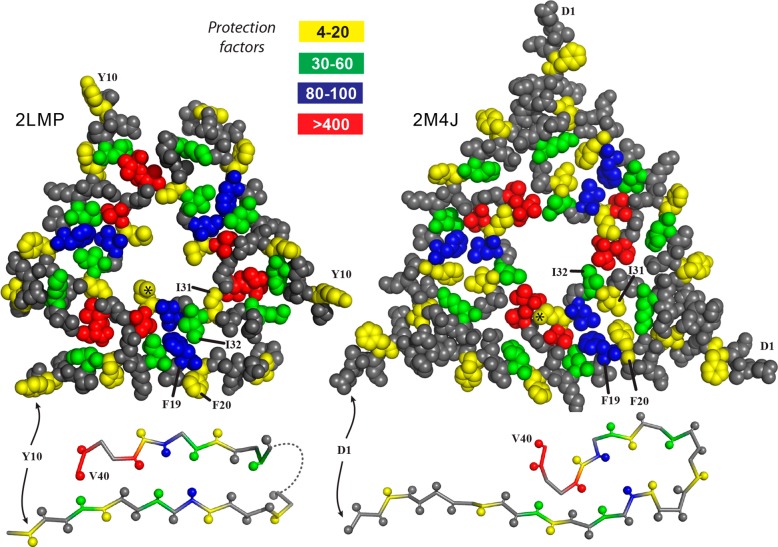Figure 4.
Cross sections of two different three-filament fibril models with van der Waals spheres for non-hydrogen atoms. Below each model is a ball-and-stick rendering illustrating the backbone conformation of one filament in the model. On the left is the 2LMP model with the three Y10 residues at the N-termini labeled. Note that M35 (marked by an asterisk in the lower filament) is exposed to the water-filled central channel, consistent with the low observed protection factor. Also note that residues F20 and I31 appear to be much more solvent accessible than their adjacent residues of the same type (F19 and I32), consistent with the observed protection factors. All other residues for which data are available are either buried or accessible in this model, consistent with the measured protection factors. At the right is the 2M4J model with its three N-terminal “D1” residues marked. Note that the backbone conformation does not correspond to a β-sheet, and there are numerous discrepancies between expected and observed protection factors. For example, F19 and F20 appear to be similarly buried, contrary to the observed protection factors. Also, I31 is buried while I32 is not, the converse of the relationship indicated by the observed protection factors. M35 (marked by an asterisk in the lower filament) appears to be less accessible than V40 in this model, again the converse of the relationship indicated by the observed protection factors.

